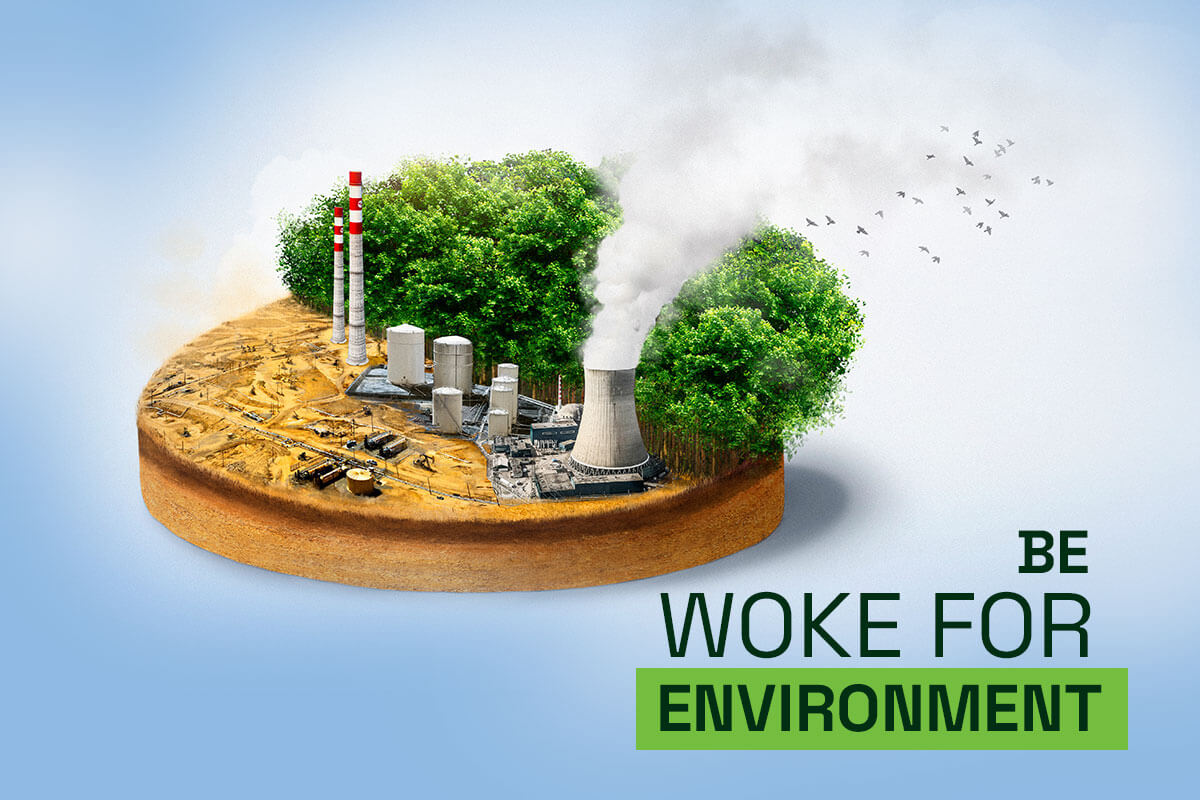Be Woke for Environment

What does “environmental awareness” mean? Environmental awareness is understanding the importance of the environment, the accountability of human actions, and the often-negative impact they have on the environment, ultimately acknowledging the need to protect and preserve our environment. However, before we delve deeper into what environmental awareness is, it is necessary to comprehend the environmental movement. Environmentalism is the ideology that evokes the necessary responsibility of humankind to protect and preserve nature while protecting it from selfish afflictions. Environmental awareness has played a key role in the success of the movement. By ensuring humans acknowledge the fragility of the natural world and take more conscious and cautious actions or steps to conserve the environment, they have helped the movement grow and caused humans to be more responsible.
However, how do we identify environmental awareness? When we see people make choices that would protect the environment rather than hurt it, they are practising environmental awareness. For example, when people choose to use reusable bottles over plastic bottles, they are being environmentally conscious. If a person switches to using cloth bags for shopping, it is a result of gaining environmental awareness. Therefore, the presence of environmental awareness among a society and its people can be observed by the actions they take and the decisions they make about what might seem like miniscule things but can have a relatively remarkable impact on nature. Environmental awareness has increased over the past few years, and the discussions about it have seemed to gain more social significance. However, it deserves to be way more relevant than a trend or fad because it is more profound than those. Environmental awareness should be able to command genuine commitment from humankind rather than their fleeting attention.
which incites some rather interesting research. Intriguingly, the history of environmentalism dates back to hunter-gatherer times. Yes, that’s right! The early hunter-gatherers were aware of the impact that fire and hunting tools had on the environment. Even when there were only 200,000 homo sapiens roaming the globe around 50,000 BCE, anthropologists have found evidence for human-induced plant and animal extinctions. It is astounding how early these humans reacted. However, in those times, migrating to newer lands was considered the plausible solution.
Having said that, ecological awareness first appears in records around 5,000 years ago. The Vedic sages praised the forests in their hymns. Taoists urged that human life should be a reflection of nature’s pattern. The Buddha taught and preached compassion for all sentient beings. We can see apprehension about forest destruction and dying marshes in the Mesopotamian Epic of Gilgamesh. In ancient Greek mythology, when the great hunter Orion vows to kill all animals, he is punished. Therefore, the earliest human stories convey the need to restrain our power, reiterate the sacredness of wilderness, and emphasize humankind’s responsibility to care for the natural world.
So, then, what are the various ways through which environmental awareness can be spread and propagated among people effectively and efficiently? It is extremely important to use the correct means of communication and the appropriate actions to take to ensure that the message of environmental awareness reaches people in an impactful manner and inspires action in them. It is further illustrated what the different methodologies are that can be put to use or experimented with to get the desired reaction of increased environmental consciousness.
Attending a rally or a march can be a socially significant way to create environmental awareness. It can be a very effective way to draw the attention of the masses, the media, and public bodies, both governmental and non-governmental. 2017’s People’s Climate March in Washington, D.C., and 2019’s mass gatherings across countries before the United Nations’ Climate Action Summit are exemplary examples of the power and impact that rallies or marches hold. These two events had gained significant news coverage, which further amplified the cause.
In today’s digital world, using social media to advocate for and spread environmental awareness can be the most effective way. The power of social media platforms is undeniable. Social media has the power to educate people and alter their actions in a drastic way. Contacting elected officials would be an appropriate step to take when certain important actions have to be taken for the collective good. Oftentimes, recommending books and movies that better illustrate environmental concerns like the climate crisis or environmental pollution can have a profound impact on people. Writing articles or curating videos to voice one’s opinions and solutions is a good way to create environmental awareness.

